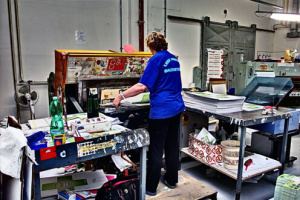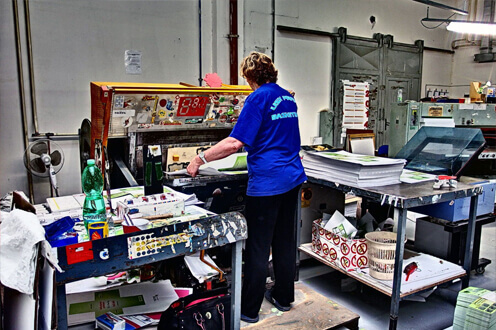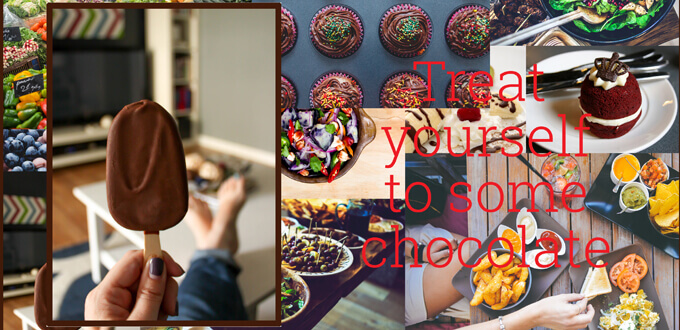Visual content has become digital marketing’s crown jewel in the past five years, but transmitting messages visually is something storytellers have been doing for quite some time.
After working for 10 years in the film and TV industry, where I developed sharp visual storytelling skills, I transitioned into marketing where I apply, test, and improve these tactics to not only view marketing through the lens of a filmmaker, but to also transform visual marketing content into focused and effective storytelling images.
I have learned that a picture is, indeed, worth a thousand words. But how do you make sure they are the right words?
Here are some insights I’ve gained during my career that can help you create visual marketing images that get the results you want.
Why Are Visual Marketing Images So Effective?
We, as busy creatures, want information that is relevant, quick, and easy to digest. And since our brains can process visual information much quicker than textual, it makes sense that images and visual media have become our preferred format of information input.
But it is not only that we process information quicker. An image invites our imagination to participate.
We are curious creatures by nature. When we see a wrapped present, we wonder what’s inside; when we see people whispering to each other, we imagine what they are saying; and when we see a picture of something, we fill in the gaps to create a full image in our minds, completing the parts that are not visible in the picture.
In other words, we create a story and become our own storytellers.
Once we immerse ourselves in a story, the action of looking at something becomes an experience. And an experience leads to an emotional connection.
Why is an emotional connection important? Because the consumer decision-making process is based on that emotional connection. And if you sell a product or a service, understanding how to create emotional connections that drive purchase decisions is crucial for your business.
However, not all pictures are gateways to stories, experiences, and emotional connections. There are a few elements needed in the equation to turn a simple image into a powerful picture.
Create Storytelling Images People Identify With
The power of an image depends on our ability to identify with what we are seeing.
Specifically for businesses, how much we can relate to the visual and how close it is to our own lives will impact how much we want to continue in the sales cycle laid out for us.
For example, let’s say that you live in the city and are looking to buy a new bike to commute to work.
Now, let’s explore 3 different images and the level of identification each one offers:

When I look at this I think: “This guy is a pro, I just want to get to work. I have nothing in common with him and clearly do not need a bike like his.”

When I look at this I think: “Cute tricycle — for a kid! This is completely irrelevant to me.”

When I look at this I think: “She looks my age. I love her sneakers! This bike looks like something I could own. I think I’m going to look into this one.”
Make sure you show pictures that your target audience can identify with, and can see themselves in.
The best way to achieve identification is to get your target audience to take the pictures themselves and submit them to your site, so you can display your customers’ images alongside your own.
Create Captions that Invoke Relevant Meaning
Captions help us understand the meaning of a picture, and transmit the purpose of it. If there is no caption, the viewer will ultimately make one up.
The same picture with different captions can symbolize completely different things.
Let’s take a look at an example of one picture with 3 different captions and see how the caption not only changes the meaning of the picture, but also our feelings towards it.
Notice how you react to the picture on an emotional level immediately after reading the caption.

Highly recommended print shop! They made the posters for my gig and they came out perfect.
This caption defines the picture as a recommendation for a business, and since the review is good, we see the picture in a positive light and make a mental note to remember the business for whenever we need similar services.

Dire situation for the workers of Laurelville: On their feet for 10 hours straight and no end in sight.
This caption places the picture in the category of news. We see this woman as a victim of workplace abuse, so we feel sorry for her and mad about the situation.

Last day at work. Goodbye, lovely people. Hello, retirement!
This caption makes us see the picture as a personal one, sharing a personal moment in life. We can complete the story by imagining she is doing her one last task before retiring and feel excited and happy for her.
When creating marketing images, make sure you look at the picture and the caption as one unit and use them together to get your message across.
The meaning of the picture, or the call to action that it suggests, depends on the guidance you give in the caption. As you saw in the example above, the exact same picture can create in us a practical mental note, a call to action, happiness, madness, sadness, or excitement — all based on the power of the caption.
Use Smart Lighting to Communicate Emotions
The amount and type of lighting that a picture has, along with the level of contrast, immediately affects how we feel about it.
A brightly lit image with low contrast makes us feel safe. We feel that we are able to see the whole picture and nothing is hidden from us, creating a positive feeling that encourages us to trust whatever we are looking at.
On the flipside, a dark picture with high contrasts makes us feel uneasy. We are not able to see everything in the frame and that makes us feel suspicious, wondering what they are hiding and not showing us.
Images like this seem mysterious, as if we have to decipher what we are looking at. This is why mystery and suspense movies are dark — a lot of scary things happen in places no one can see.
Let’s look at 2 examples of a very similar composition with different lighting and contrast to see how those differences instinctively make us feel.
For the first example, here are two images of a man.

When I look at this I think: “I can barely see half of his face. What is he hiding? Why is he grinning? I don’t trust him.”

When I look at this I think: “He looks like a nice guy. If I needed help and he offered, I would definitely accept.”
And here’s another example:

When I look at this I think: “This woman is relaxed, looking at the calm and beautiful view. She has nothing to worry about.”

When I look at this I think: “This woman is looking into the unknown. I feel scared for her. Will she make it?”
Use lighting and contrast to steer the feelings you want to transmit with your marketing images. If you want to be mysterious, use darker images with higher contrast.
But if you want to instill trust, make sure everything is brightly lit and visible to show that you have nothing to hide.
Pay Attention to How Context and Priming Affects Visual Messaging
Pictures don’t exist in silos; we see them in the context in which they are presented to us. Therefore, the context that surrounds the image defines the attitude that the viewer will have towards that image and the action he or she will take afterwards.
In other words, the context sets the mood. The colors you use, the text, the fonts, the number of elements on the page, the size of the image — all of these affect the impact of a picture.
You can design the context in a way that will influence consumer behavior by priming them to positively receive and interpret your messages.
Let’s look at the same picture placed in 3 very different contexts and notice how the context changes your perception of the picture:

This layout has one image and one caption or textual message. The connection between the image and message is strong and the message comes across loud and clear.

This layout shows the same single textual message, but it has a collage of several additional images of food surrounding the one image we saw in version #1.
This causes an overload of the senses and nothing stands out: not the image, and not the text. This is good if you just want to catch someone’s attention because there seems to be a lot to look at — and that sparks curiosity — but not so good if you have one clear message you want to send out.

This layout shows the same single image as in version #1 but has several textual messages. The image now is forced to represent more than one textual message and therefore the connection between them is not as strong. The image becomes an illustration and is sent back in the order of importance.
Be very careful not to put all your attention in the image and neglect the context it exists in. By planning the right context (this can include canvas size, colors, text, fonts, etc) you will be able to prime the viewers and lead them to the action you are after. Define the goal of that picture and design the context of it accordingly.
Integrate Customer Content to Communicate Authenticity
We are naturally drawn to honesty and truth. When we see something that has clearly been staged, we have a tendency to not believe or trust it.
The more authentic your pictures are, the better you will be able to connect with your customers, followers, and fans.
This is the reason companies have started to move away from stock images that, although pretty, look too clean and too staged. For example, HR departments prefer to show real pictures of their offices and employees and stay away from sterile group photos of people working.
For eCommerce businesses, investing in high-quality photos of the products is a no-brainer but people do not perceive them as authentic representations of the product.
How many times have we ordered something that looked amazing on the official website only to realize that in real life it’s just barely similar to the photo?
This is why people ask other people about their real and authentic experiences and trust their answers more than branded marketing content. They read reviews and look at other people’s authentic pictures, and they make buying decisions based on these photos.
Let’s look at 2 pictures that showcase black shoes. One is a staged picture with dramatic lighting, and the second one is user-generated content from Instagram. Notice which one you trust more, and would help you make a decision when considering a purchase.
Product photo:

User-generated Instagram photo:

Businesses today must not only invest in producing high-quality photos but also in encouraging their users to take and share real photos of the products they offer, and in displaying these photos on their own channels.
User-generated photos build trust in the brand, attract new customers, and foster engagement among past buyers. As a matter of fact, the Instagram engagement rate is higher than all other social media platforms. It’s one of the many Instagram benefits for businesses looking to use UGC as part of their marketing strategy.
Conclusion
With the modern influx of input, we have trained ourselves to make up our minds based on first impressions. When meeting someone face-to-face, it takes us 7 seconds to make a first impression.
Online we are much faster: it takes us just .05 seconds to decide if we like a website or page or product.
With such little time to make an impact, make sure you cover all your bases, have the best pictures in place, and connect meaningfully with your shoppers.














 Join a free demo, personalized to fit your needs
Join a free demo, personalized to fit your needs